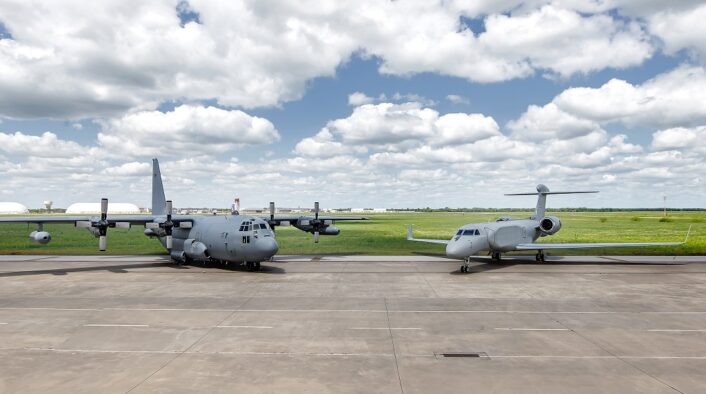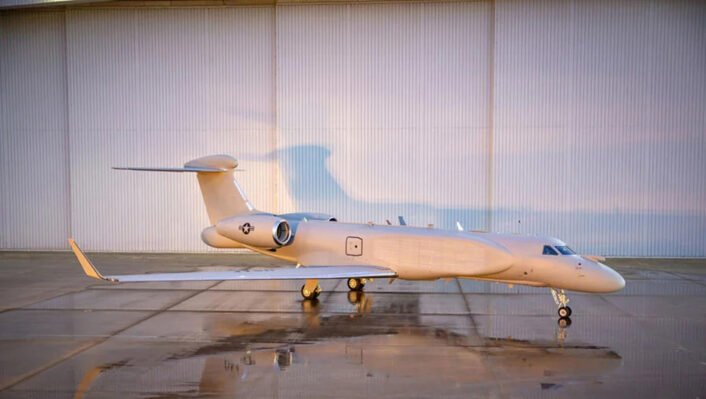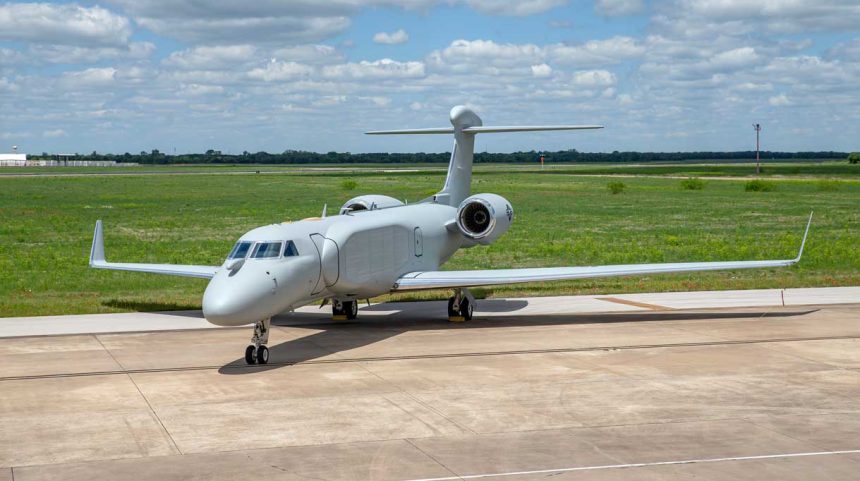The delivery of the first EC-37B will allow the beginning of formal combined developmental and operational testing of the EC-130H’s replacement.
BAE Systems and L3Harris Technologies announced the delivery of the first of 10 EC-37B Compass Call aircraft to the U.S. Air Force for formal combined developmental and operational testing. The aircraft performed its first test flight in the fully missionized configuration and USAF livery on May 4, 2023, from L3Harris’ integration and modification center in Waco, Texas.
The U.S. Air Force is projecting its electronic attack capabilities into the future, upgrading and transitioning the Compass Call airborne tactical electronic attack weapon system from the 40 years old EC-130H to the new EC-37B. The Compass Call system is one of the busiest assets of the entire US inventory, which took part in every conflict where US troops were engaged in combat.

“The delivery of the first EC-37B Compass Call is a major milestone for our customer’s electromagnetic attack capabilities,” said Dave Harrold, Vice President and General Manager of Countermeasure & Electromagnetic Attack at BAE Systems. “We take pride in delivering this critical EW capability to keep the U.S. at the vanguard for defense and deterrence.”
in 2014, the U.S. Air Force initiated the Compass Call Rehost program, which is moving the Compass Call suite from the EC-130H to the new EC-37B, based on the Gulfstream G550 Conformal Airborne Early Warning Aircraft (CAEW) airframe. As a result of all the program’s efforts, the EC-37B’s operating costs will be cut in half compared to the EC-130H Compass Call, while also being able to perform its mission at higher altitudes and speed and longer ranges and durations.
Considering that the EC-37B airframe has a much smaller size than the EC-130H, reducing the size, weight and power (SWaP) requirements of the prime mission equipment was a key point of the program. This was achieved thanks to the new open-system hardware and software solution that is being adopted for the EC-37B which, by the way, also resulted in a much lower cooling requirement for all onboard electronics.

“Our team accomplished the incredible challenge of migrating the Compass Call mission equipment from the much larger EC-130H and fully integrating it into the Gulfstream G550 platform,” said Jason Lambert, President of Intelligence, Surveillance and Reconnaissance at L3Harris. “As the Air Force sunsets its 40-year-old EC-130H fleet, the cutting-edge EC-37B will empower the customer to continue serving its vital electromagnetic warfare mission for generations to come.”
Compass Call disrupts enemy command and control communications, radars, and navigation systems and limits adversary coordination, as part of the Counter-Command, Control, Computers, Communications, Cyber, Intelligence, Surveillance and Reconnaissance Targeting (Counter-C5ISRT) mission. Restricting an adversary’s battlespace coordination and force management, as well as suppressing the air defenses, is essential in today’s operational scenarios to improve the chances of missions’ success.
Even more advanced capabilities could find their way into the Compass Call’s electronics and software, as Chris O’Donnell, Deputy Assistant Secretary of Defense, Platform and Weapon Portfolio Management, said last year that the Department of Defense needs targeted investments and innovative and novel capabilities, such as cognitive EW, to keep the edge over adversaries and to counter advanced and non-traditional threats. As a matter of fact, cognitive EW capabilities are already being tested with the Angry Kitten ECM pod, so it is totally expectable that someday they will end up on the EC-37B.
You can find out more about the EC-37B Compass Call in the detailed report we published here at The Aviationist earlier this year.









